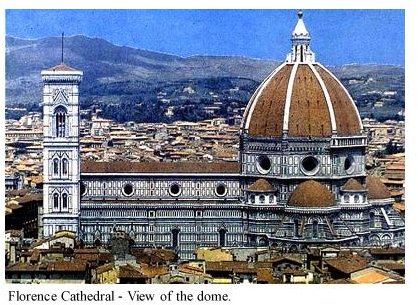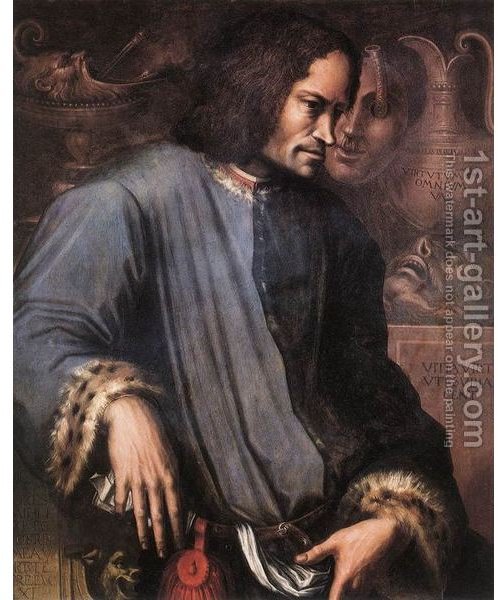Study Guide on The Renaissance: Important Events, Movements & People
The Renaissance was an exciting time period marked by a renewed interest in the classical ideas, culture, and arts. Basically, the Renaissance was a return to studying and building on the achievements of the Ancient Greeks and Romans. The Renaissance time period lasted from approximately 1350 to 1600; the word renaissance is derived from a French word meaning rebirth, expressing the rebirth of Greek and Roman artistic, philosophical and intellectual progress. The Renaissance was also marked by the development and spread of Humanism.
Humanism
Humanism refers to a shift in intellectual pursuits during the Renaissance from religious to secular. While the Middle-Ages saw a focus on religious themes, the Renaissance turned people’s minds towards the individual and worldly matters. The dignity of the individual became paramount and scholarly occupations challenged the tradition of placing spiritual matters above human themes. This secular dogma grew into the Humanities which are the study of Greek, Latin, Philosophy, and History.
The Italian Renaissance
The Italian Renaissance began in the city-state of Florence and soon spread to other city-states. Each city-state would develop its own character but they did have similarities during the Renaissance time period. Social upheaval among the poorer classes caused political authority to be held by one man in each city-state. Known as Signori, they were usually wealthy individuals who did not wish to have themselves, or their peers, involved in armed conflict. Signori paid condottier, hired soldiers to fight for and protect the city-state. The Signori also engaged in diplomacy as a means of avoiding conflict. Each city-state appointed an ambassador to foreign courts and, the Italian city-states agreed to remain a non-threat to each other.
Florence, Venice, and Rome were the most significant city-states of the Italian Renaissance.
Florence**:**
Florence, a prosperous city in the 1400’s due to its successful textile and banking industries, was ruled by the Medici family beginning in 1434 with Cosimo de’ Medici. Cosimo attempted to alleviate working-class unrest by taxing the wealthy at a higher rate and using the proceeds to pave streets and construct sewer systems. His grandson, Lorenzo de’ Medici (Lorenzo the Magnificent) continued this tradition by supporting public festivals, the arts and philosophy.
Eventually, Florentine textiles would suffer in competition with Flemish and English cloth industries. The Medicis were challenged and resigned power to the Dominican friar, Girolamo Savonarola, who claimed Florence and the church needed to be saved from Humanism. Savonarola burned painting, elaborate clothing, books and musical instruments. He also regulated public behavior. The friar met a great deal of opposition and was hung for heresy in 1498 and he Medici returned. Florence, however, was no longer at its height.
Venice**:**
Venice had a republican form of government during the Renaissance. The doge was the legal head of the government, but the real power was held by the Council of Ten, wealthy merchants who passed laws, elected the doge, and decided most matters of importance. If the doge’s son wished to marry, it was the Council of Ten who needed to approve.
The city-state’s role as an economic powerhouse was starting to dwindle during the Italian Renaissance because of the Muslim invasion and moving trade routes. Nevertheless, Venice’s wealth from its shipyards and glass factories was intact and its location made it an important trade center and link between Asia and Western Europe.
Venice’s art and architecture revealed both Byzantine as well as western European influences.
Rome**:**
Rome was a leading Renaissance city in the 1500s. Power was held by its wealthiest citizens, mainly the succession of Popes and Cardinals living in the Vatican. Politics took precedence over religion and Popes often used their wealth and power to advance the interests of their families, and support artistic ventures. The Renaissance time period was the time of Pope Alexander VI and the Borgias. Alexander used the papacy and the church’s wealth for his family’s benefit. It was also the era in which St. Peter’s Basilica was rebuilt under the guidance of Julius II and Leo X. The Basilica project was one of many meant to beautify Rome.
The Northern Renaissance:
Trade, travel, and war would bring Renaissance culture from Italy to France, Germany, England, and the low countries-Netherlands, Belgium, and Luxembourg. The Renaissance would take on varied tenures in the north depending on local traditions, culture, needs and tastes. Foe example, Renaissance architecture in France would produce the chateaux, a blend of Medieval Gothic Towers and the classical arches used by Italians.
Renaissance Men (and Women):
Francesco Petrarch – began a new literary form known as <em>sonnets</em>. These were short poems he wrote for a woman named Laura whom he had loved and lost. Laura fell to the Black Death.
Giovanni Boccaccio - A friend of Petrarch who wrote Decameron, a collection of short stories told by young people as a diversion from the trials of the plague.
Niccolo Machiavelli – wrote The Prince which examined politics in Renaissance Italy and stated leaders should be prepared to employ force and deceit as means of maintaining power. This book would influence not only Machiavelli’s contemporaries but rulers throughout history.
Baldassare Castiglione – author of The Book of the Courtier, a tome offering advice on proper behavior for Renaissance men and women.
Isabelle d’Este – married to the Marquis of Mantua, Isabelle played a key role in the Italian city-state of Mantua during the Renaissance time period. Used her court to assemble artists, and hold classical poetry readings and musical recitals.
Filippo Brunelleschi – Italian Renaissance architect who designed the dome for the Cathedral of Florence. (Unlike Medieval architects, Renaissance architects put their names to their work.)

Donatello – Florentine sculptor who was the first since the Classical period to sculpt a free standing nude.
Michelangelo Buonarroti – Michelangelo was also from Florence but would eventually travel to Rome in the service of popes. He would paint the ceiling of the Sistine Chapel, sculpt La Pieta, and design the dome for St. Peter’s Basilica.
Lorenzo Ghiberti – created the ten biblical scenes on the bronze doors of Florence’s cathedral baptistery. The project took Ghiberti twenty-one years.
Leonardo da Vinci – a true Renaissance man, da Vinci was a gifted artist and designer who worked in the fields of astronomy, anatomy, and mathematics. His most famous works include The Last Supper and the Mona Lisa. Leonardo was also from Florence but worked mainly in Rome and Milan.
Raphael Santi – a Renaissance painter known for his collection of paintings for the pope’s apartment. The paintings are of religious and classical subjects.
Francois Rabelais – a French physician, monk, and author who wrote popular comedies, satires, and parodies that rejected the Middle Age tradition of focus on the afterlife.
Desiderius Erasmus – Christian Humanist who encouraged his peers to learn Hebrew and Greek in order to understand earlier versions of the Bible. In Northern Europe, the Christian Humanist movement consisted of scholars wishing to return to the simplicity and piety of the early Catholic Church.
William Shakespeare – English Renaissance playwright whose plays drew from classical mythology, medieval legends, and history.
Christopher Marlowe – a contemporary of Shakespeare. His plays stemmed from similar themes and, like Shakespeare, human attributes such as jealousy and love.
Thomas More – author of Utopia, a book that critically examined his society through a comparison with an ideal, egalitarian one. More was a friend of Desiderius Erasmus.
Please add more Renaissance artists, thinkers, architects, etc. in the comments below…
Image Credits
https://www.1st-art-gallery.com/thumbnail/44569/1/Portrait-Of-Lorenzo-The-Magnificent
https://www.ucalgary.ca/applied_history/tutor/imagemid/florencedome.JPG
